Forums
- Forums
- Duggy's Reference Hangar
- RAF Library
- BRISTOL M.1 MONOPLANE
BRISTOL M.1 MONOPLANE
Post a reply
- Go to Previous topic
- Go to Next topic
- Go to Welcome
- Go to Introduce Yourself
- Go to General Discussion
- Go to Screenshots, Images and Videos
- Go to Off topic
- Go to Works in Progress
- Go to Skinning Tips / Tutorials
- Go to Skin Requests
- Go to IJAAF Library
- Go to Luftwaffe Library
- Go to RAF Library
- Go to USAAF / USN Library
- Go to Misc Library
- Go to The Ops Room
- Go to Made in Germany
- Go to Campaigns and Missions
- Go to Works in Progress
- Go to Juri's Air-Raid Shelter
- Go to Campaigns and Missions
- Go to Works in Progress
- Go to Skinpacks
- Go to External Projects Discussion
- Go to Books & Resources
-
12 years agoSun Jun 06 2021, 11:01amDuggy
 Main AdminText bye By "Colin Owers" (thanks)
Main AdminText bye By "Colin Owers" (thanks)
The introduction of the synchronised machine gun by the Germans saw the Allies
without any aircraft capable of matching the new German scouts. The Royal Aircraft
Factory had already produced a single-seat version of the B.E.2c under the
designation B.E.12. This aircraft had such a disastrous combat career that in June
1916 Sir Douglas Haig condemned its further use on the Western Front. On the
14th of the following month a remarkable little monoplane was flown for the first
time. Its performance was such that its failure to be ordered for the Western Front has
remained one of the unresolved questions of the Great War.
This monoplane was designed for the Bristol company by Captain Frank Barnwell
who had returned in August 1915 as Chief Designer "on indefinite leave without pay"
from the RFC. Barnwell had tested spinners on the Bristol Scout, and comparison
between Scout 5555 with a hemispherical spinner and Scout 5556 with a pointed
spinner revealed that the latter was prone to vibration and structurally unstable while
the domed spinner gave no trouble. Barnwell had then designed his new monoplane
around the 110 hp Clerget 9Z rotary engine in a similar cowling fitted with a
hemispherical spinner.
Designated M.lA the new Bristol design was one of the cleanest aircraft of its time,
Gone were the multitude of drag-inducing struts and wires. Two landing wires
supported each wing from a curved cabane which was mounted over the cockpit so
that it also functioned as roll-over protection for the pilot. The 20 foot 7 inch long
fuselage was faired by full length stringers to a circular cross-section, tapering from
behind the wing to the rudder post. The private venture M.1A reached the remarkable
speed of 132 mph in the hands of test pilot Fred P. Rayham.
The M.1A was purchased by the War Office and apparently was subjected to air trials
as well as structural proof-loading. Its excellent performance was mirrored in the
structural test figures. The "Test of Wings, Report No. H.354" of August 1916,
records that the strut across the body between the two front wing spars failed at 8.8
times normal flying load! However only four slightly modified aircraft with the
designation M1.B were ordered.
The contract was for five aircraft which included the M.1A, (Serials A5138 - A5142).
These latter four aircraft were modified to have a Vickers gun mounted on the port
upper longeron; the cabane was modified to a circular pattern; a large inter-spar cutout
panel was incorporated in the starboard wing root; and the leading and trailing edges
of the wings were curved back to the spars at the root. These latter modifications
were to improve the view downwards and forwards as it was virtually impossible to
see in these directions on the M.1A. The cut-out panel was initially covered with
Cellon but this proved impossible to see through and the cutout was left uncovered.
The M.1A was delivered to the Central Flying School on 29 November as A5138 and
by then it had been rebuilt to M.1B standard.
Despite the situation in France, the War Office was in no hurry to order the M.1B.
There seems to be no surviving documentation to explain this attitude. A5139 had
gone to France and been demonstrated in front of General H.M. Trenchard. Trenchard
disliked the Bristol monoplane and, before he had his pilots' reports on the type, had
written asking that no more be sent to France. One version of the Trenchard attitude
states that Freddie Dunn made a mess of landing the Bristol in front of Trenchard,
damaging the monoplane. Dunn blamed his performance on the high landing speed
of the aircraft. At 50 - 52 mph this was only a couple of mph faster than the D.H.2
biplane pusher fighter, and Barnwell, who was an indifferent pilot had no trouble
landing the M.1. (On one occasion Barnwell flew his two-seat M.R.1 biplane into a
tree when he "just wasn't looking" where he was flying!) A Preliminary Performance
Report on M.1C serial C4902 noted that "The manoeuverability of machine is good
laterally, directionally, also fore and aft, except with the engine off, when machine is
nose heavy. Flies 'hands off' at about three-quarters throttle. Length to unstick, 85
yards; to pull up (engine stopped), 120 yards," The reason for the dislike of the
Bristol may have been official prejudice which had led to the infamous "Monoplane
Ban" after a number of fatal monoplane accidents pre-War.
The M.1B monoplanes thus never entered operational service in France. They were
sent to the Middle East where their performance was wasted in the desert conditions.
Rotary engined scouts relied on air cooling and the hot, sandy conditions did not suit
them at all.
Eventually Contract No. AS 8236 was let for 125 Bristol monoplanes as the M.1C,
(Serials C4901 - C5025). The engine was now a 110 hp Le Rhone and the length 20
foot 5? inch. The Vickers gun, synchronised by a Sopwith Kauper interrupter gear,
was mounted on the fuselage centreline where it was in easy reach of the pilot to clear
stoppages. Wing root cutouts were incorporated in both wings which were modified
from the M.1A. Leading edge riblets were carried to the end of the wing and extra
ribs were added near the ailerons.
Research by the eminent historian J.M. Bruce shows that less than 20 Bristol
monoplanes were used operationally, the rest were used by training squadrons in the
United Kingdom and at Heliopolis in Egypt.
Nos. 17 and 47 Squadrons each had 'A' Flight equipped with the M.1C when based at
Salonika in Macedonia for operations against the Turks and Bulgars. In April 1918
these two flights were merged to form No. 150 Squadron. 'C' Flight of No. 72
Squadron operated the type from Basra in the Mesopotamian campaign, the Bristols
doing good ground attack work in the capture of Kifri and Kirkuk. The Official
Historian recording that "by swift diving attacks from low heights, brought terror to
the disheartened and war-weary Turkish soldiers". No. 63 Squadron was allocated
four of No. 150 Squadron's M.1C fighters in November 1917, but it is thought that
they were only used for communication duties. The M.1B fighters of No. 111
Squadron were the only Bristol monoplanes to see service in Palestine.
No. 111 Squadron initially equipped with a Bristol Scout, two M.1B monoplanes, four
D.H.2 pusher fighters and four Vickers F.B.19 fighters. The squadron was to provide
offensive patrols to destroy enemy reconnaissance aircraft and to provide escorts for
British reconnaissance B.E.2 biplanes. The Bristols were not favourably reported on.
In a letter from Major General W. Sefton Brancker to General Salmond in December
1917 he noted that the "Bristol Monoplanes and Vickers built Bullets (F.B.19) are not
very much good except to frighten the Hun: they always seem to lose the enemy as
soon as he starts manoeuvring".
In November 1917, A5141 was lost in the Judean Hills near Hebron when 2nd Lt.
Edgar Percival suffered engine failure and force landed. Percival captured a couple of
Arabs and forced them to escort him back through the Turkish lines to safety. A5140
and A5142 also served with No. 111 Squadron. In early 1918 the Squadron reequipped
with Nieuport and S.E.5a fighters. By then A5142 had been sent to
Heliopolis where it ended its days as a trainer.
The Bristol had little success in aerial combat. One occasion where it was successful
was on 26 April 1918 when Lt. A.E. de M. Jarvis of No. 17 Squadron in his Bristol
M.1C, together with Lt. J.J. Boyd Harvey in a Nieuport, engaged a D.F.W. two-seater
over Prosenik and brought it down to crash in Hristos Gully. One of No. 150
Squadron's M.1C fighters was shot down into Lake Dojran in September 1918 in
what must have been one of the last operational sorties of the Bristol monoplane.
As related above the M.1C was used mainly for instruction and was a popular aircraft.
Many instructors had their "personal" M.1C painted in some of the most colourful
schemes seen on any British military aircraft. Checks, stripes, feathers, dragons, and
sun-ray flashes were some of the markings carried by the little Bristols of training
units. The qualities of the M.1C must have become known to the operational
squadrons in France as Oliver Stewart recorded that "Rumours flew, so they grew.
The little Bristol Monoplane, admittedly a brilliant piece of design and far in advance
of its period in many respects, . . . was eagerly awaited. . .There was something tragic
in the way the rumours grew to a maximum and then began to fade."
The official attitude to the Bristol monoplane can be judged from the fact that six
were given to Chile in 1917 in part payment for two warships which were under
construction in British shipyards when war broke out and which had been taken over
by the British Admiralty. This was done before the M.1 had been tested in combat
and when there were plenty of other types available in quantity. A further 12 M.1C
monoplanes are recorded as having been obtained by the Chilean Aviacon Militar in
October 1918, together with a similar number of Puma engined D.H.4 bombers, eight
S.E.5a fighters and a pair of Avro 504 trainers.
On 12 December 1918, Capt. Teniente Dn. Dagoberto Godoy of the Chilean Military
School of Aviation flew one of the M.1C monoplanes from Santiago to Mendoza in
Argentina to make the first aerial crossing of the Andes. Godoy had to fly at 13,000
feet to clear the Uspullata Pass. In the following April a student pilot, Lt. Teniente
Cortinez, tried to duplicate this feat. He took off from Santiago without permission at
night. Presumed lost, when he rang from Mendoza he was ordered to immediately
return to Chile. One his return instead of punishment he found himself feted as a hero
and earned early promotion.
After the Armistice Bristol bought four M.1 monoplanes back from the Aircraft
Disposal Board and refurbished them as sporting aircraft for private use. All
armament was removed and the wing root cutouts were covered over. One was an
M.1B which was modified to take a 100 hp three cylinder Bristol Lucifer radial
engine as the Bristol M.1D. This aircraft received the registration G-EAVP. The
others were registered G-EASR and G-EAVO, the last not being registered in the
United Kingdom but shipped to Bristol's U.S. representatives in New York. There
proved to be very little market for the sporting single-seater and it was not until
November 1921 that G-EAVO was purchased by Senor Juan Pomba and flown to
Madrid by Larry Carter. It received the Spanish registration M-AFAA. G-EASR was
kept as a company demonstrator until it was withdrawn in 1925.
C4964 and C5001 were also purchased from the Aircraft Disposal Board. The former
was registered G-EAER but it is doubtful whether it ever carried this registration. It
appeared at the 1919 Victory Aerial Derby, the first important post-war British air
race, in service colours with its roundels overpainted and its military serial marked
in small white letters on the fin. It was flown by Major C.H. Chichester Smith who
made the first circuit of London at just under 100 mph, but had to return to Hendon in
the second lap with engine trouble.
C5001 was purchased by Harry Butler in partnership with H.A. Kauper (Harry
Hawker's assistant), together with an Avro 504 and three Le Rhone engines. Butler
had flown C5001 at the No. 4 School of Aerial Gunnery at Marske-by-the-Sea,
Yorkshire. When disposed of by the Aircraft Disposal Board C5001 had only flown
28 hours and 35 minutes. The aircraft were shipped back to South Australia and
assembled in Adelaide. Butler flew C5001 back to his home town of Minlaton on 6
August 1919 to a tumultuous welcome. Five days later he flew two bags of mail back
to Adelaide. Butler barnstormed the M.1C around South Australia and flew it to
victory in the Peace Loan Aerial Derby held at Adelaide on 8 September 1920. The
aircraft was initially flown in its service markings but by the 1920s was known as the
"Red Devil" and it is assumed to have been painted red at some time. On 28 June
1921 it was registered as G-AUCH.
Butler stored the Bristol in his motor garage at Minlaton, and it was withdrawn from
the register on 27 June 1922. After Butler's death in 1924 the Bristol remained in
storage until purchased by "Horrie" Miller in 1930. He moved to Parafield, South
Australia, where it was modified to take a Gipsy I in-line engine and the fuselage
given flat sides. In this guise it was registered VH-UQI on 15 October 1931. Named
"Puck" by Miller, the Bristol was flown to victory in the 1931 and 1932 Adelaide
Aerial Derbys. The engine was changed to a Gipsy II and finally a Gipsy III. It was
struck off the register in 1936 after the Department of Civil Aviation refused to grant
it a Certificate of Airworthiness. It was still flown on occasion by Miller who was
granted a permit to fly it to Perth, Western Australia in 1940. It was flown during and
after the war and then suspended from a hangar roof at Guildford. C.B. Tubrook of
Minlaton noticed it in 1956 and negotiated for its return. Miller gave the aircraft to the
town of Minlaton. A special building was erected to house the aircraft after restoration
to its appearance when it was used by Miller. In 1973 a partial restoration was
undertaken which saw the Gipsy engine removed and a Le Rhone rotary fitted but the
slab sides were retained. As it now appears it is a strange mixture, but as it is the only
surviving Bristol M.1 monoplane it is to be hoped that it will be fully restored in the
future.
This brief history of the Bristol M.1 monoplane would not be complete without
mention of the exploits of the special M.1D racer. Painted a brilliant "Cellon red"
overall with black nose and tail and white registration, the M.1D made its racing
debut in April 1922 at Croydon where Cyril F. Unwins flew it to third and second
places in the first two races, averaging just over 100 mph. In August Larry Carter won
the Aerial Derby in the M.1D. On its next entry it suffered engine trouble and Rollo
de Haga Haig had to withdraw.
The M.1D was entered in the Grosvenor Cup Race which was flown on 23 July 1923.
A specially tuned Lucifer of 140 hp was mounted for this race and the M.1D was the
favourite of the nine entrants. Flown by Major E.L. 'Leslie' Foot, the M.1D was
making good progress, however when Foot made a required landing at Filton, he
complained of being affected by petrol fumes. A leak in the fuel tank was repaired and
Foot took off as he stood a good chance of winning the race. Flying low at full throttle
the M.1D was seen to dive into the ground and burst into flames. The cause of the
accident was never discovered, but it is thought to have been the failure of the tail or
the flying wires and apparently not due to the faulty fuel tank. Foot's death so upset
the Company that Bristol withdrew the Bristol Type 82 Bullet. which was to have
been Foot's mount, from the 1923 Aerial Derby.
The Bristol M.1 monoplane was never allowed to reach its full potential. Whatever
reasons for denying it to the fighter squadrons on the Western Front, the last word
belongs to Oliver Stewart who wrote "Here, then, was an aeroplane. . . with a
performance so far superior to that of any of its contemporaries that it would have
given our pilots a psychological and physical ascendancy of the most convincing
kind."
CAMOUFLAGE AND MARKINGS.
The prototype M.1.A was clear doped overall. It is not known when the decision to
commit the Bristol M.1 to the Middle East was made, but it seems likely that the
M.1B and modified M.1A monoplanes were delivered in PC10 [khaki-green] rather
than PC12 [reddish brown] which was specified for aircraft serving in desert climates.
The M.1C was probably delivered in PC12. The colour would have varied as aircraft
were repaired and would have reflected the stocks of dope available at that
particular unit. Delivery schemes for all production aircraft seem to have been PC
upper-surfaces and with clear doped lower-surfaces. Fuselages were painted overall in
the dark dope. Metal panels were painted to match the dark dope; light grey or in
some cases, natural metal. Many training machines were clear doped overall, and as
already mentioned, many of these sported colourful liveries.
The M.1A had two footsteps on each of the upper and lower longerons whilst the
M.1B had only one at each longeron. This led to the M.1B carrying an unusual
marking in the form of a vertical white line joining the two footsteps which were
outlined in white. In spite of this guide, getting into the M.1B must have been a
difficult procedure.
General characteristics
Crew: one, pilot
Length: 20 ft 5 in (6.24 m)
Wingspan: 30 ft 9 in (9.37 m)
Height: 7 ft 9 in (2.37 m)
Wing area: 145 ft? [10] (13.6 m?)
Empty weight: 900 lb [10] (409 kg)
Loaded weight: 1,348 lb (611 kg)
Powerplant: 1 ? Le Rh?ne 9J rotary engine, 110 hp (82 kW)
Performance
Maximum speed: 113 knots (130 mph, 209 km/h) at sea level
Endurance: 1 hr 45 mins
Service ceiling: 20,000 ft (6,096 m)
Armament
Guns: 1 ? fixed-forward .303 in (7.7 mm) Vickers machine gun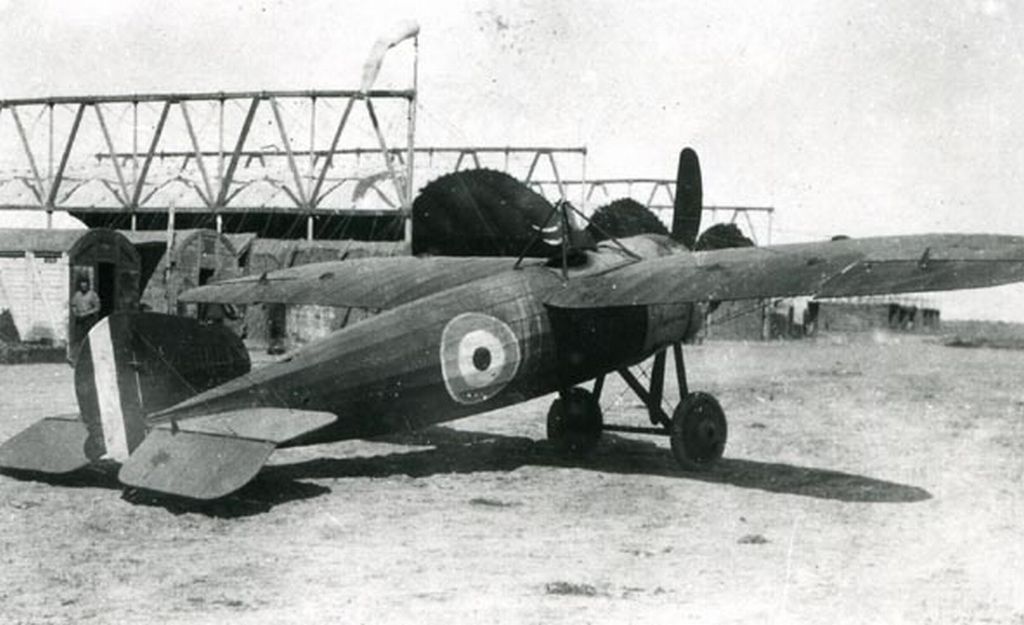
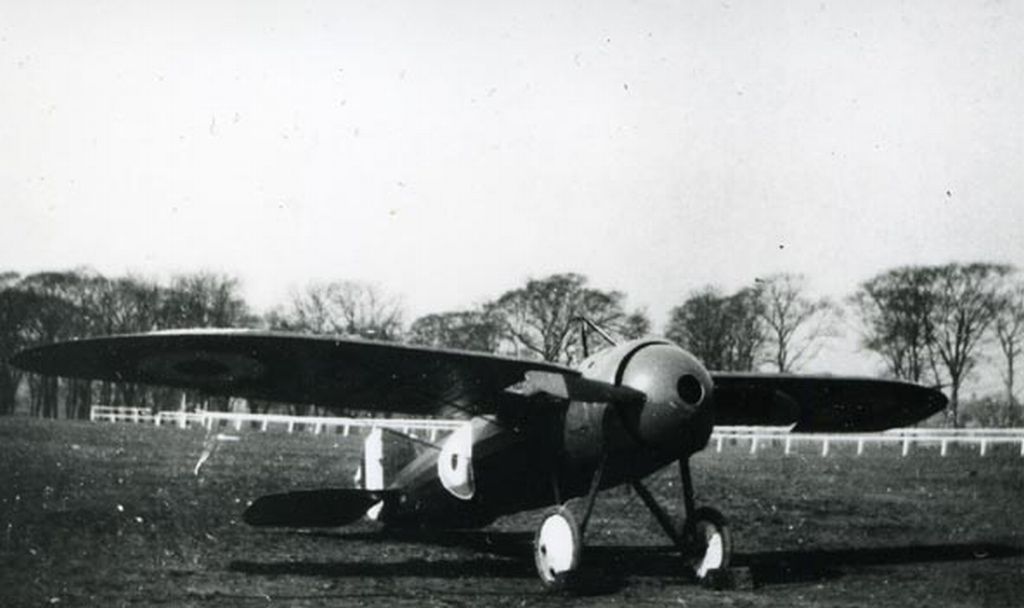
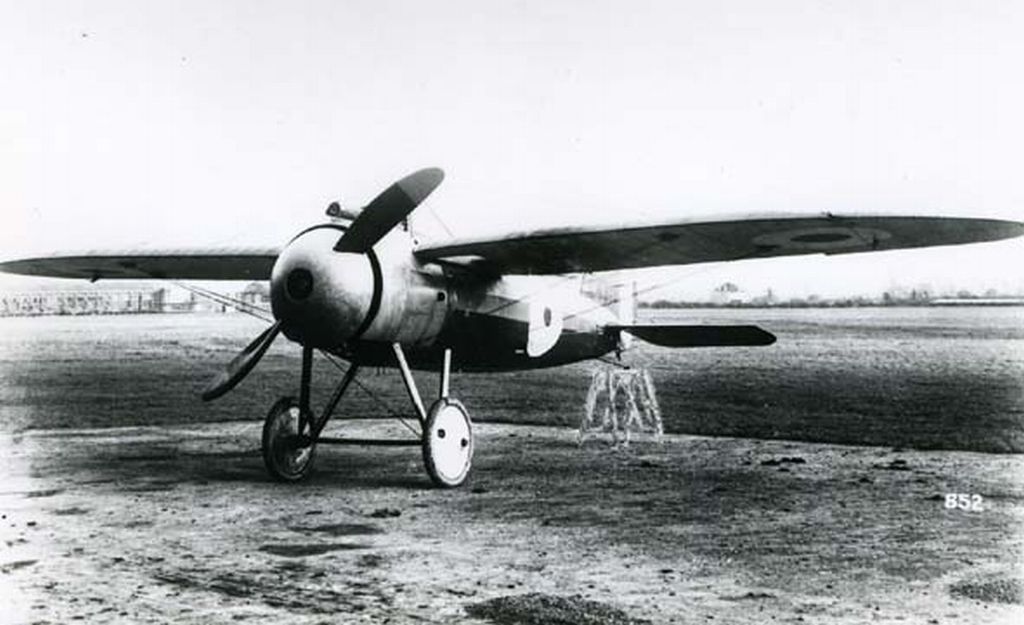

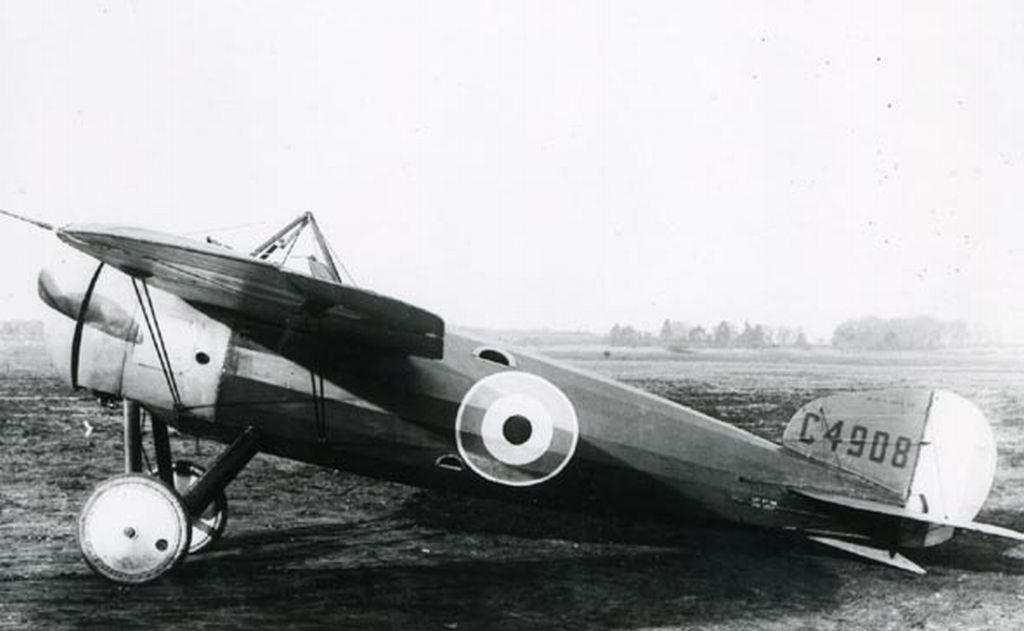
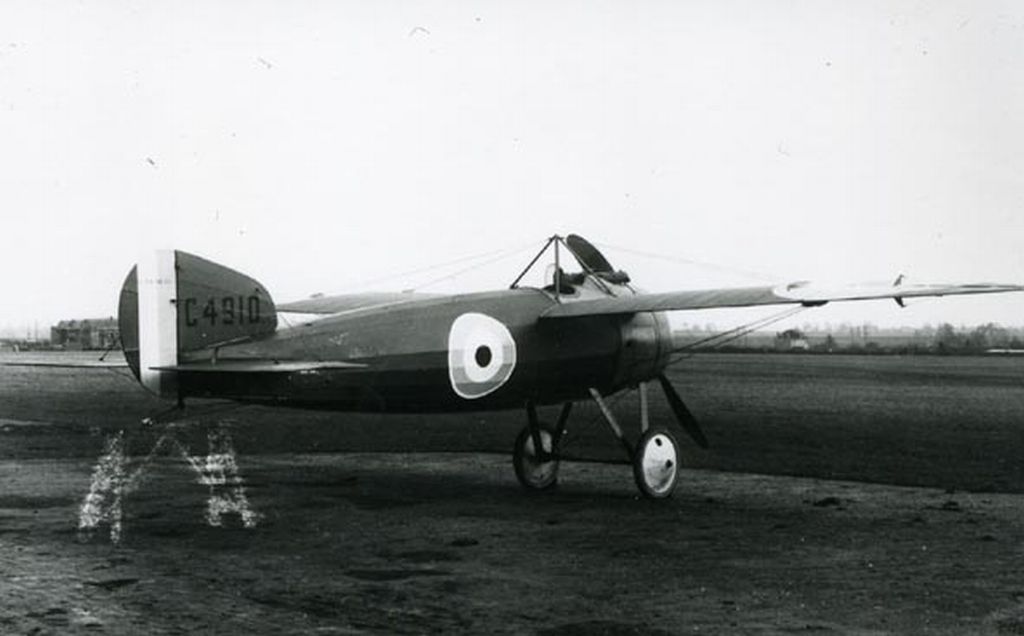
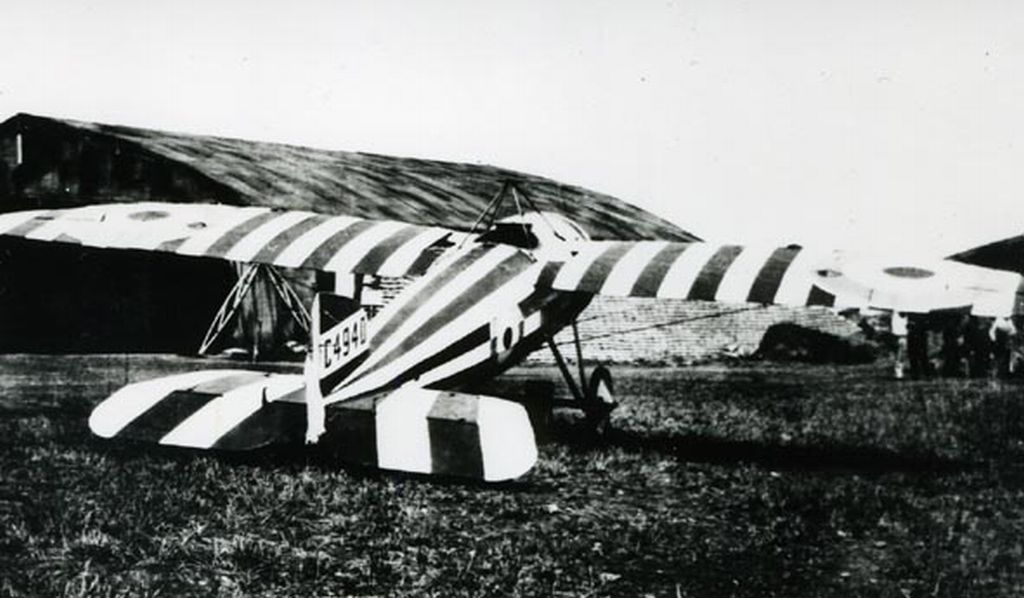
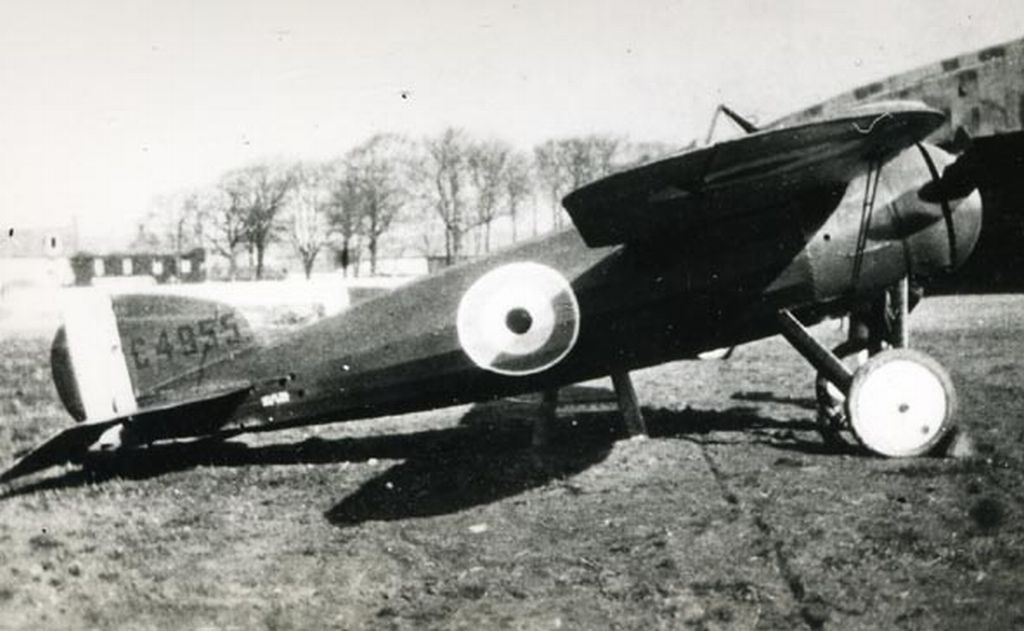
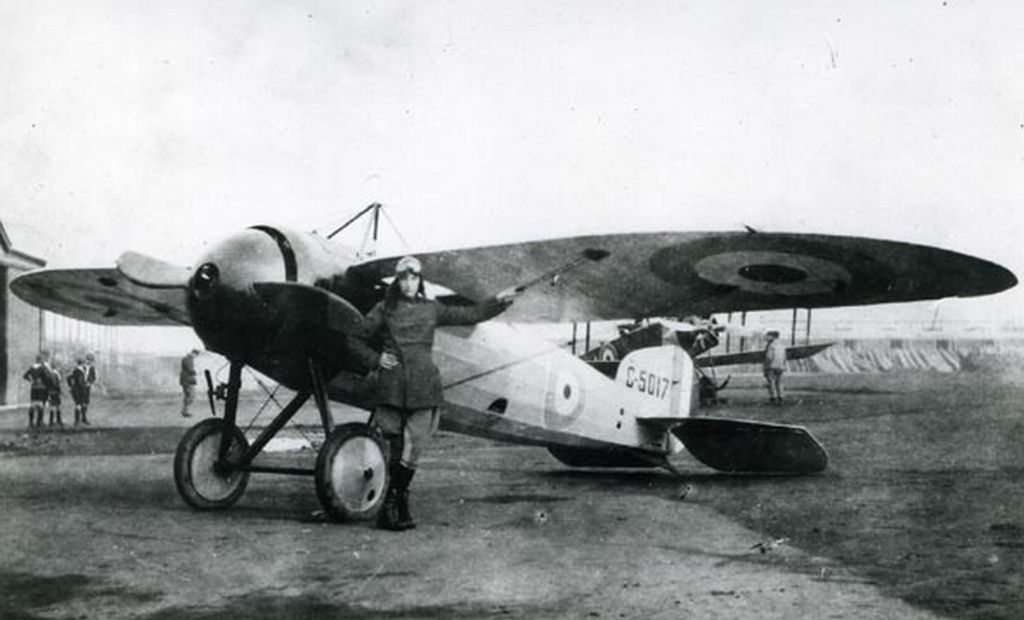
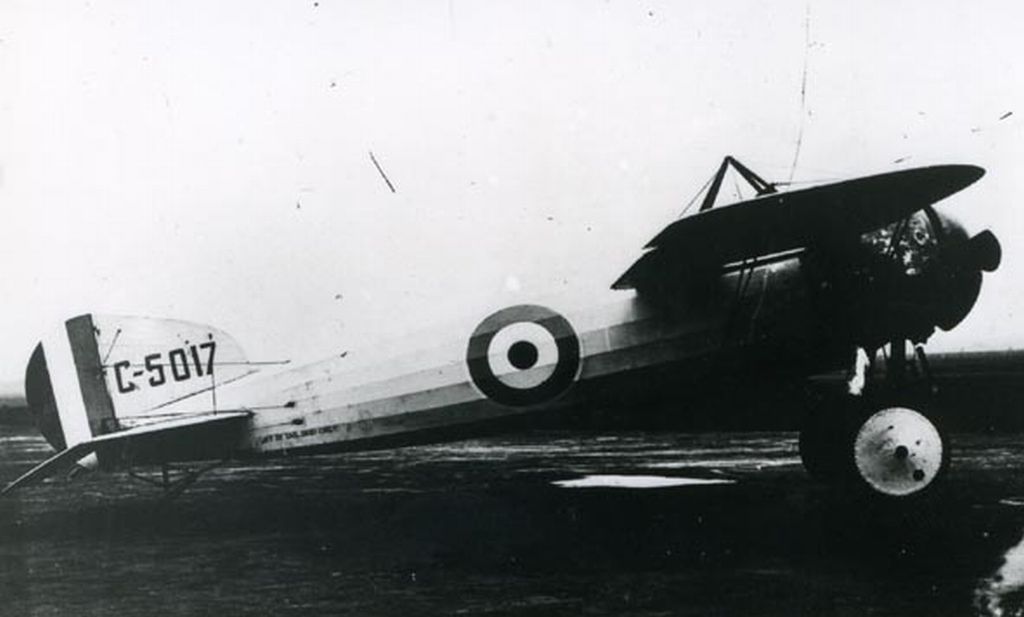
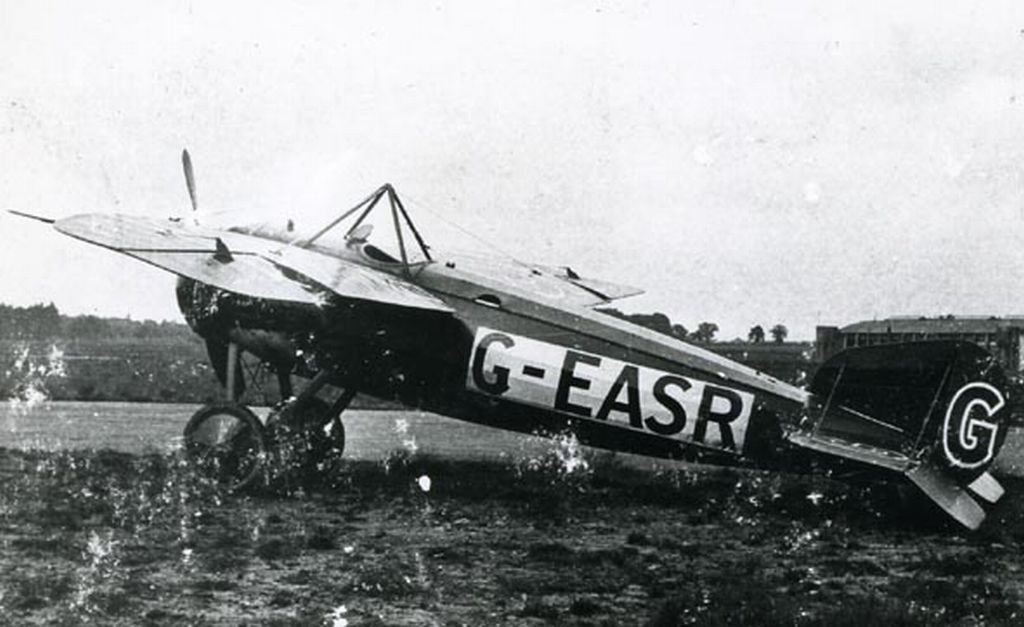
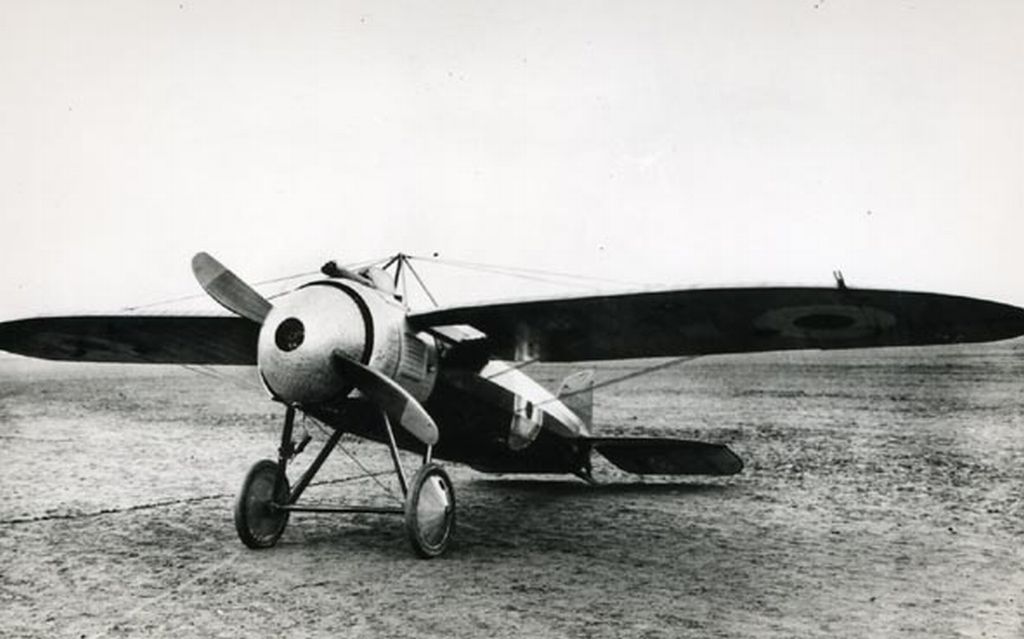
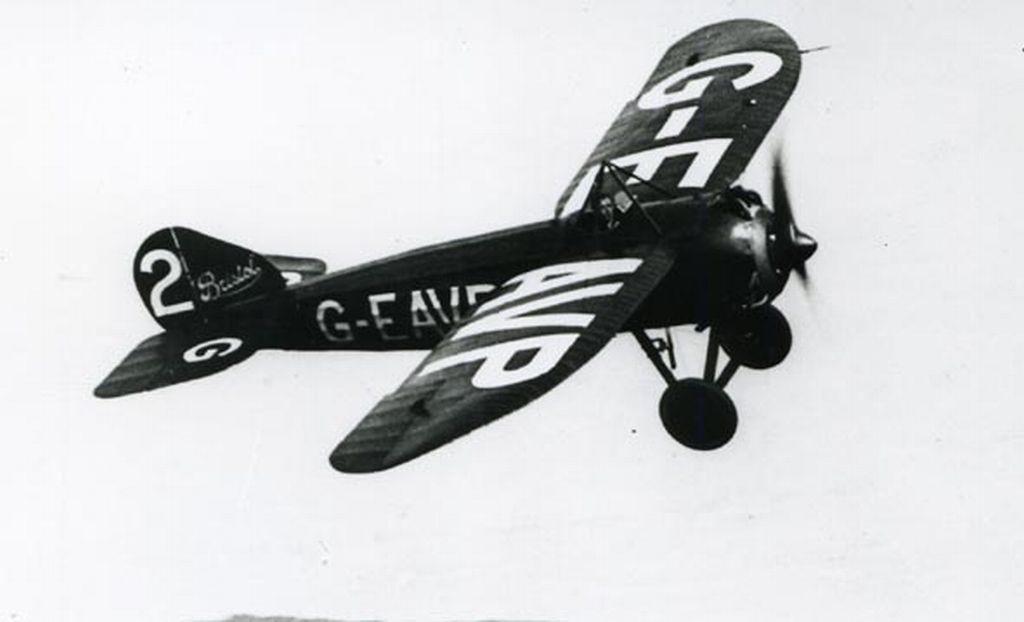
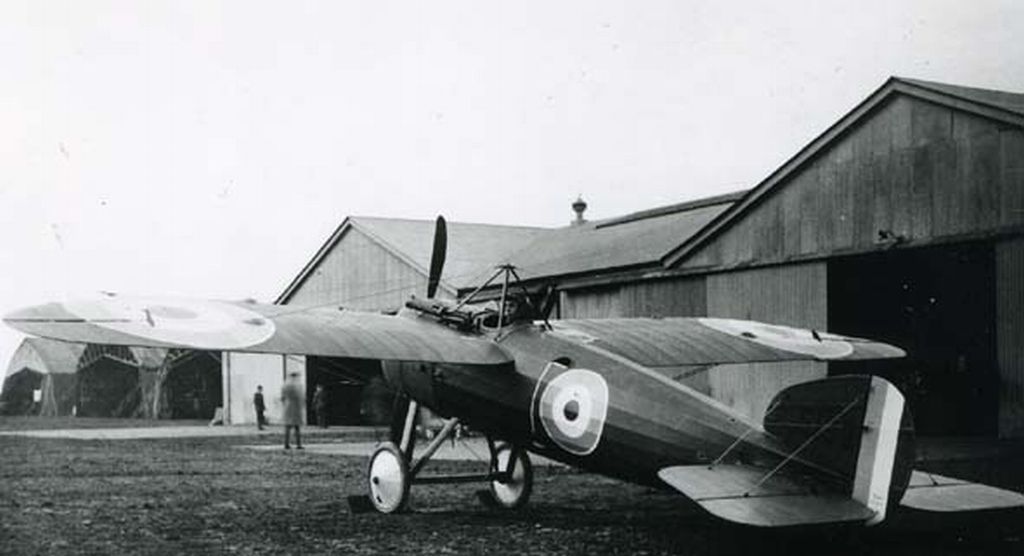
.jpg?width=1920&height=1080&fit=bounds)
.jpg?width=1920&height=1080&fit=bounds)
Regards Duggy
Post a reply
- Go to Previous topic
- Go to Next topic
- Go to Welcome
- Go to Introduce Yourself
- Go to General Discussion
- Go to Screenshots, Images and Videos
- Go to Off topic
- Go to Works in Progress
- Go to Skinning Tips / Tutorials
- Go to Skin Requests
- Go to IJAAF Library
- Go to Luftwaffe Library
- Go to RAF Library
- Go to USAAF / USN Library
- Go to Misc Library
- Go to The Ops Room
- Go to Made in Germany
- Go to Campaigns and Missions
- Go to Works in Progress
- Go to Juri's Air-Raid Shelter
- Go to Campaigns and Missions
- Go to Works in Progress
- Go to Skinpacks
- Go to External Projects Discussion
- Go to Books & Resources
